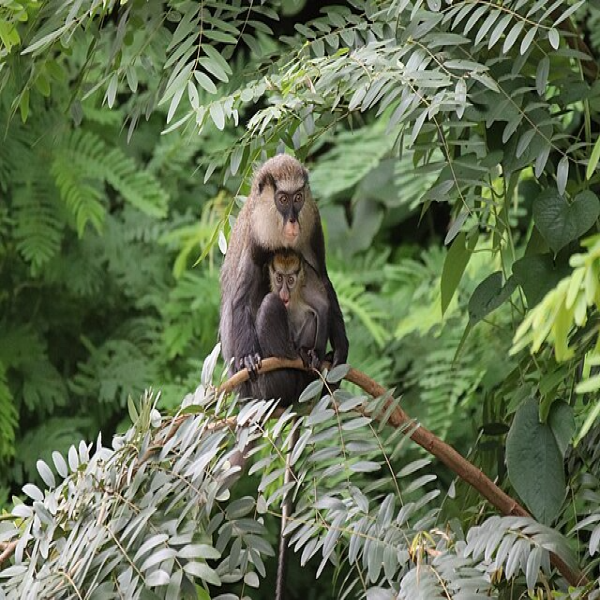New range record for Campbell’s monkeys (Cercopithecus campbelli) in West Africa

All claims expressed in this article are solely those of the authors and do not necessarily represent those of their affiliated organizations, or those of the publisher, the editors and the reviewers. Any product that may be evaluated in this article or claim that may be made by its manufacturer is not guaranteed or endorsed by the publisher.
Authors
The current distribution of Campbell’s monkeys Cercopithecus campbelli extends from southwestern Gambia to the western Ivory Coast. In Senegal, it has only been confirmed in the western part of the country. Here, we report for the first time its presence in southeastern Senegal. We obtained camera trap footage of a Campbell’s monkey individual in the Dindefelo Community Nature Reserve located in Kedougou region, 174 km away from its known distribution range. In the footage, a single Campbell’s monkey appears alongside a group of at least nine green monkeys Chlorocebus sabaeus. We discuss different hypotheses that could explain the presence of the Campbell’s monkey in Dindefelo, and conclude that this individual may be a single migrant.
Supporting Agencies
Jane Goodall Institute USA, Jane Goodall Institute Austria, Jane Goodall Institute France, Jane Goodall Institute Netherlands, Stichting Wildlife, Tang Prize FoundationHow to Cite

This work is licensed under a Creative Commons Attribution-NonCommercial 4.0 International License.
PAGEPress has chosen to apply the Creative Commons Attribution NonCommercial 4.0 International License (CC BY-NC 4.0) to all manuscripts to be published.







